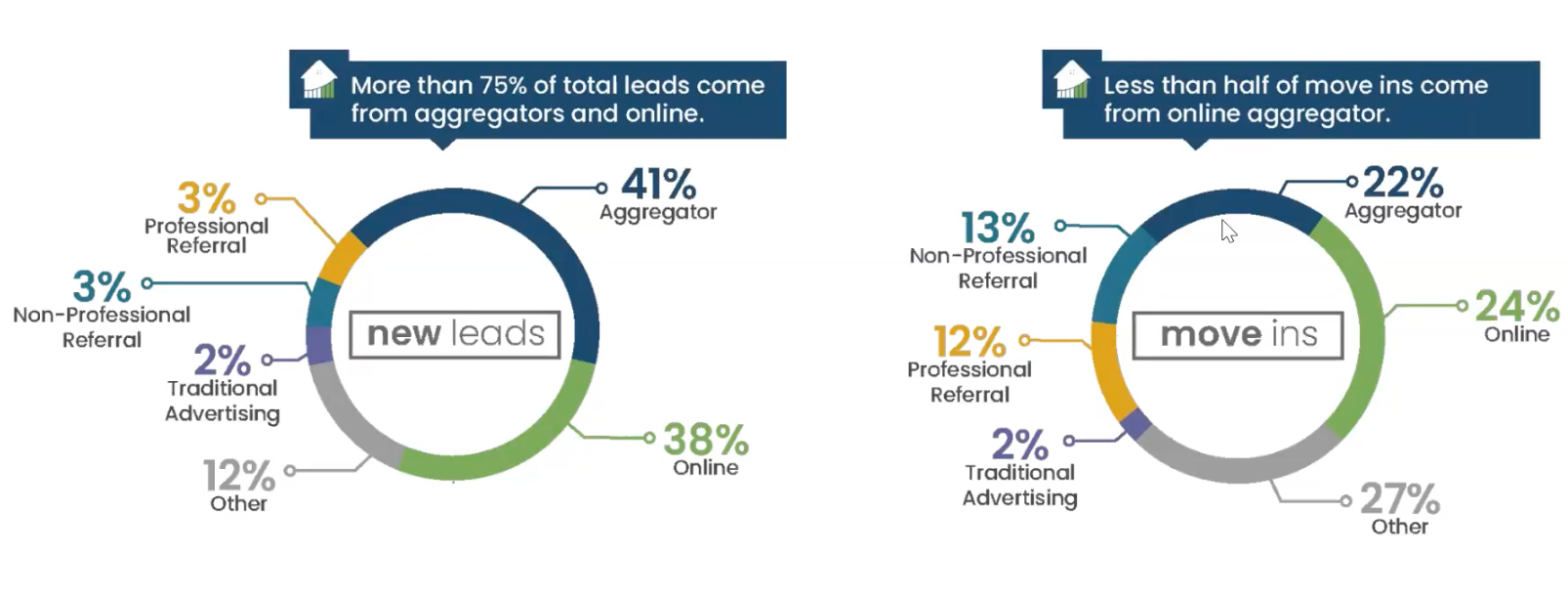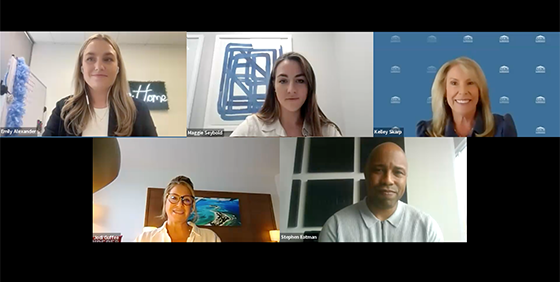While overall private-pay seniors housing occupancy has now increased for seven straight quarters, according to the National Investment Center for Seniors Housing & Care (NIC), many operators are starting to see that growth slow to a crawl — still well short of pre-pandemic norms.
According to Kelley Skarp of Arbor Company, this is due to a variety of factors, but most notably the general economic challenges of high interest rates and inflation.
“In the current economic environment, people are looking at their wallets a little more closely,” said Skarp. “While leads have flattened out, tours have not for us. The need is still there, people are still investigating, but they might be taking a little bit longer to make their decision.”
Her comments came during a webinar titled “Seniors Housing & CRM: Can You Predict the Future?” WelcomeHome, a customer relationship management (CRM) software company specializing in seniors housing, sponsored the Seniors Housing Business event, and used it as a way to launch its WelcomeHome Year In Review: 2022 data, gleaned from its more than 1,500 communities using its software.
“We’re seeing there’s still an appetite for what our industry offers,” said WelcomeHome’s Emily Alexander while analyzing the data. “Lead volume is still growing, which is encouraging, but we’re seeing lower tour-to-move-in conversion.”
One silver lining of occupancy growth flattening is that it’s a sign that the sales cycle has stabilized now, three years after the COVID-19 pandemic threw everything out of alignment, added Maggie Seybold of WelcomeHome.
“We’re seeing stabilized sales funnel volume. We’re starting to get back to normal sales cycles here, which is very encouraging.”
Stephen Eatman of Sunshine Retirement said his company’s occupancy reflects the trends shown in the report, but gave some added context. As move-ins resumed following the pandemic, many of those new residents had been putting off moving to seniors housing. As a result, acuity levels were higher, leading to a shorter stay.
As a result, occupancy leveled off even as leads, tours and move-ins were high. The move-outs were happening faster than the move-ins could make up ground.
“Coming out of COVID, we got a lot of needs-based move-ins,” said Eatman. “The acuity levels may be a little higher. That impacts our move-out number. We’re having a hard time getting that net growth.”
Jodi Guffee said her company, Radiant Senior Living, was seeing that same trend.
“Residents are coming to us later. We haven’t seen a slow-down on our move-ins or our leads — it’s pretty steady — but census is flat as we aren’t keeping pace with the move-outs. We’re going to be riding that wave for quite some time.”

Source: WelcomeHome
Analyzing the data
The WelcomeHome representatives both took some time to highlight portions of the report that were enlightening. One of those data points regarded how operators are receiving leads today.
While more than 75 percent of new resident leads come from online sources and lead aggregators, that represents quantity but not quality. Less than half of move-ins come from those 75 percent of leads. For comparison, professional referrals only account for 3 percent of leads, but 12 percent of move-ins.
While that’s not to say those leads aren’t valuable — they’re still the largest source of both leads and move-ins — it does affect how sales team members might focus their time and effort.
“That has big implications for what our sales teams are doing day to day and how we’re driving those move-ins,” said Seybold.
And all this information comes against the backdrop of the oldest baby boomers turning 78 this year. The “silver tsunami” that the industry has talked about for decades is finally arriving at our shore.
“The baby boomers are here. We need to prepare ourselves to manage them and meet them where they are,” said Seybold. “They have different needs, and they’re coming to us in different ways. Learning to adapt to those new engagement channels will be an interesting pivot for the senior living industry.”
To download the WelcomeHome report, click here. To view the full webinar, click here.
— Jeff Shaw

